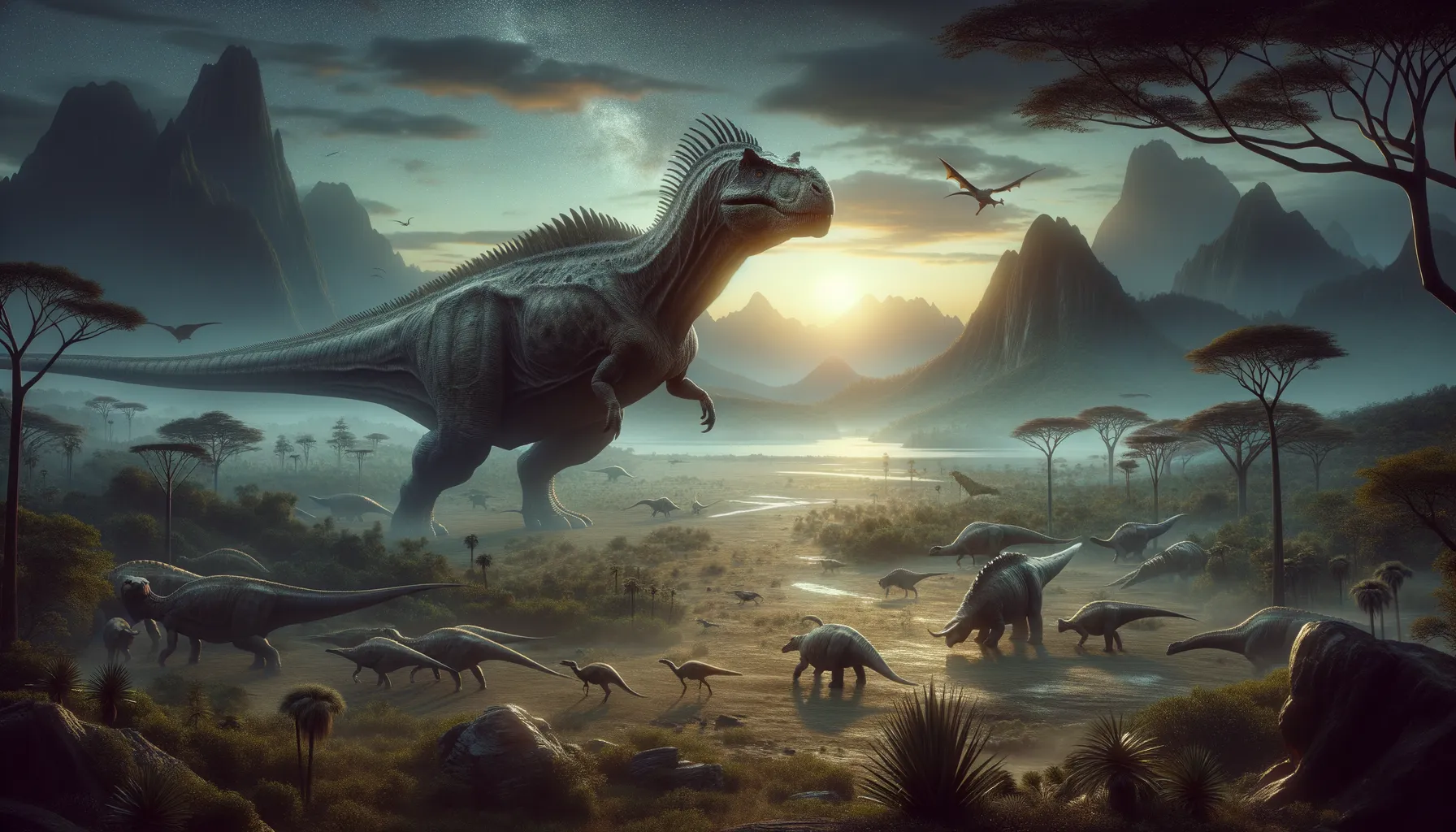
Zhuchengosaurus
A gentle giant of the Late Cretaceous era.
Period
Cretaceous
Length
Reached lengths of about 13 to 17 meters.
Height
Approximately 6 meters tall.
Weight
Could weigh up to 16 tons.
Zhuchengosaurus was a massive herbivorous dinosaur that roamed the landscapes of what is now China during the Late Cretaceous period. Recognized for its enormous size, this dinosaur likely traveled in herds. Its fossils have provided important insights into the social and physical characteristics of large herbivorous dinosaurs, helping paleontologists understand more about the ecosystems they inhabited.
Diet
Zhuchengosaurus was herbivorous, feeding primarily on the abundant vegetation that flourished during the Cretaceous period. Its massive size required large amounts of plant matter to sustain its energy needs.
Hunting
Being a herbivore, it did not hunt. Instead, it foraged for vegetation, possibly using its large size to reach high branches and fend off predators.
Environmental challenges
Zhuchengosaurus faced environmental challenges such as climate shifts that affected plant availability. Large predators like theropods posed threats, especially to the young and vulnerable. They likely had to exhibit social behaviors to protect their group against such threats.
Speed
Moderate, due to its large size.
Lifespan
Estimated between 30 to 40 years.
First discovery
Found in Zhucheng, China, in 2007.
Fun Facts
- Zhuchengosaurus was a large hadrosaur, a type of duck-billed dinosaur, that lived during the Late Cretaceous period.
- The fossils of Zhuchengosaurus were found in Zhucheng, in the Shandong Province of China, which is known for yielding many dinosaur fossils.
- Zhuchengosaurus is considered to be one of the largest known hadrosaurs, with estimates suggesting it could grow up to 16 meters long.
- Like other hadrosaurs, Zhuchengosaurus likely had a crest on its head, which may have been used for communication or display.
- Zhuchengosaurus was a herbivore, feeding on plants, and it had numerous rows of teeth adapted for grinding vegetation.
- The discovery of Zhuchengosaurus added to the understanding of dinosaur diversity in Asia during the Late Cretaceous.
- Zhuchengosaurus lived approximately 70 to 66 million years ago, just before the mass extinction event that wiped out the dinosaurs.
Growth and Development
These dinosaurs experienced rapid growth during their early years to quickly reach a size that deterred predators. Their bones show growth rings similar to trees, indicating periods of fast growth interspersed with slower periods, likely linked to environmental factors and resource availability.
Habitat
Zhuchengosaurus inhabited lush, forested areas with plenty of vegetation, ideal for grazing. The environmental conditions of their habitat allowed them to grow to such immense sizes. Water sources were crucial for their survival, and they likely stayed close to rivers or lakes.
Interaction with other species
Zhuchengosaurus coexisted with a variety of species, including smaller herbivores and large theropods. Some interactions involved competition for resources, while others, like herding with other herbivores, provided mutual benefits such as protection against predators.
Natural lifespan
Their lifespan was likely similar to modern large reptiles, around 30 to 40 years.
Reproduction
Like other dinosaurs, Zhuchengosaurus reproduced by laying eggs. The nests were likely communal to maximize survival chances against predators. Hatchlings probably remained in protected herd environments until they gained enough size for independent survival.
Social behaviour
Zhuchengosaurus likely exhibited herding behavior, which provided collective protection against predators. Social structures within herds may have involved roles related to age and size, aiding in the upbringing of young and defending against threats.
Fossil locations
Fossils have been predominantly found in Zhucheng, China, a region known for abundant dinosaur discoveries. This locale has provided researchers with extensive data on various dinosaur species, helping paint a picture of the ancient ecosystems they lived in.
